Thunderbolt from the Skies: Putin’s Doomsday Weapon Puts NATO on Final Notice
Fri 6:29 am +00:00, 22 Nov 2024 2This will be a major two part article on developing events a massive 5,600 words in size. The first (2,500 words) is free to the public and will cover my general geopolitical analysis, while the second is paywalled due to the sensitive nature of weapons systems discussions, amongst other reasons.
In that second part, I will go into critical and elaborate depth on the new Russian hypersonic “Oreshnik” IRBM, because virtually everything seen today about the system has been awash in total unadulterated nonsense, misconception, and simple amateur misunderstanding of anything and everything related to the system’s capabilities.
Some of the chief misconceptions answered revolve around the system’s speed, terminal strike parameters, CEP accuracy, target details, and future implications thereof. So for those interested in the only detailed breakdown available on the internet at this time, subscribe today and enter our inner sanctum of Knowledge—you will not be disappointed.
The escalations continue accelerating as we inch closer to nuclear war. Russia has now confirmed to have unprecedentedly used a new IRBM weapons system named ‘Oreshnik’ to strike Ukraine’s Yuzhmash enterprise facility in Dnipro:
Though I shudder at having to write such a seemingly clickbaity lead line, and while I myself do not actually expect it to come to any sort of WWIII scenario any time soon, one cannot but accurately describe the situation as having brought the doomsday clock a few seconds closer to midnight.
The main reason for this is that, essentially, Ukraine is getting exactly what it wants, underscored by Zelensky immediately launching into an online tirade calling for allies “to do something” against Russia for this escalation. Remember: Zelensky actuallyunironically wants Russia to outright nuke Ukraine. It would be a very tiny price to pay for salvation. A single nuke would do no appreciable damage at all, but would obviously change the global calculus against Russia. Thus, the developments could only be regarded as quite promising for Yermak and his small factotum.
Of course, they come with great risk for Ukraine as well. It all depends on the allies’ stomach for escalation. Russia’s actions could yield a measure of deterrence and strategic paralysis.
And why would that be? For that, let’s first listen to Putin’s address to the country in its entirety:
Above is the whole thing, but below I will highlight the most significant portion. Listen very carefully to what Putin says regarding future potential strikes of this same weapons system:
Here’s the full official transcript from the Kremlin site.
The targets to be hit during further tests of our newest missile systems will be determined by us based on threats to the security of the Russian Federation. We consider ourselves entitled to use our weapons against the military facilities of those countries that allow us to use their weapons against our facilities, and in the event of an escalation of aggressive actions, we will respond just as decisively and in a mirror image. I recommend that the ruling elites of those countries that have plans to use their military contingents against Russia also think about this seriously.
The bolded above is a clear warning to the West that Russia reserves the right to strike NATO countries directly if they continue escalating. Given that the weapon cannot be intercepted by any system, and that it reaches its targets within minutes, all European assets are now officially put on notice.
Brief Digression: Mar’ino, Kursk Strike
Let’s clarify a few things.
Firstly, in the address, Putin reported forthrightly on Ukraine’s recent attacks—the ATACMS strike on 67th GRAU arsenal in Bryansk, and the new Storm Shadow attack on some command post in Kursk. Putin gave the update that no real damage was caused in the Bryansk attack, which we reported on last time; to now, there still is no satellite BDA photos or any other secondary information even remotely suggesting that any damage was sustained there. As such, as of the moment, it appears reports were accurate that Russian S-400 systems did shoot down the ATACMS, in many ways a much easier target than the ‘stealthy’ low-flying Storm Shadows.
However, on the Kursk hit, Putin admitted there were casualties, however he states the command staff were not harmed—only perimeter defense units; from the Kremlin transcript:
As a result of the attack and anti-aircraft combat, there are, unfortunately, victims, dead and wounded from among the personnel of the external protection units of the facility and maintenance personnel. The command and operational staff of the control center was not affected and is conducting the actions of our troops to destroy and expel enemy units from the Kursk region in a normal mode.
The latest Western narrative claims North Korean generals were taken out, although they’ve already walked it back by now claiming only a single ‘general’ was ‘wounded’:
The laughable walk-back suggests the whole story is phony. And anyone with an iota of military knowledge can see why:
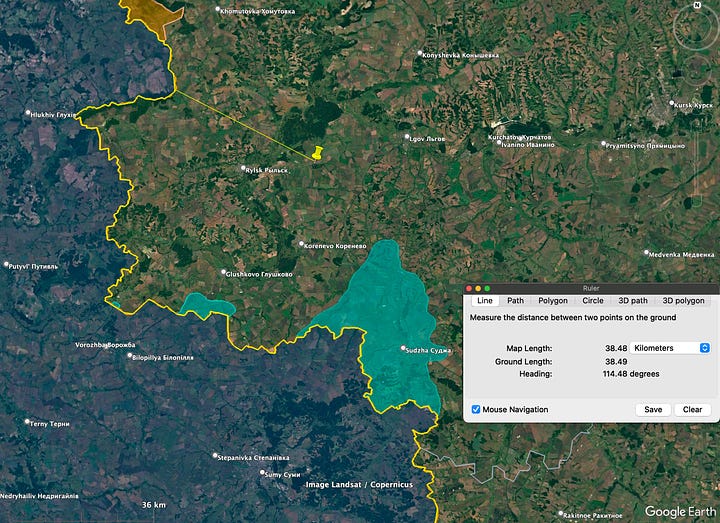
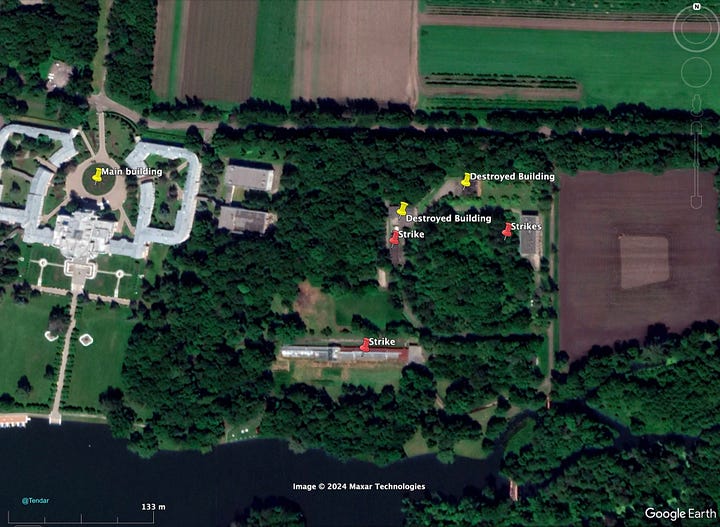
The attack hit a compound at roughly 51.58655106409714, 34.94757392496846 geolocation. What does that tell us?
The location is precisely 19km from Korenevo where heavy fighting in the Kursk region had previously taken place, and 30km from Pogrebki, the current heaviest frontline there:
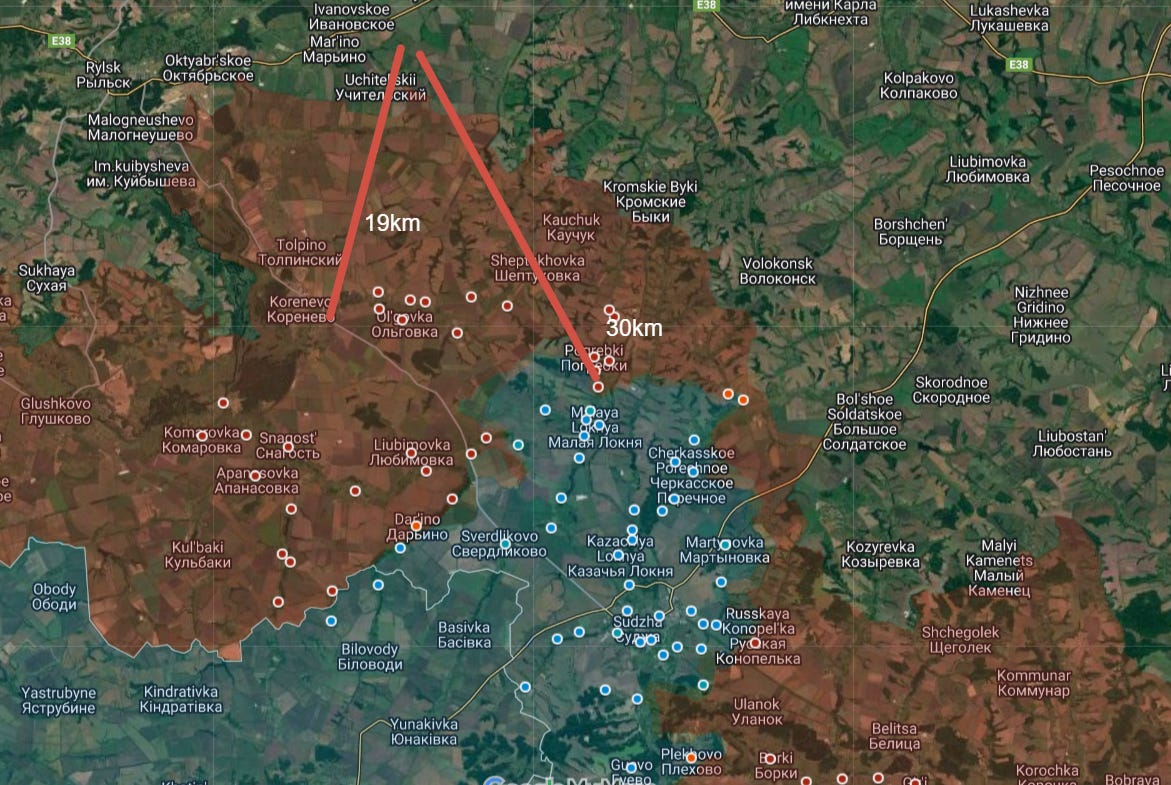
Anyone who knows how real military HQ and C2 node distribution works, knows that even battalion command would often be hard-pressed to field their HQ at such distances, let alone brigade or higher echelon. On the AFU side, battalions generally stick to 15-30km, with brigade HQ as far as 30-50km or sometimes even 100km from front.
Army group level HQs—which is where actual starred generals reside—would not be anywhere closer than 100-200km if not more. For instance, Russia’s famed Rostov supreme command HQ is nearly 220km to the closest LOC around Selidove, west Donetsk. At best, 30km could potentially have a brigade HQ with Lieutenant Colonel staff, and even that is iffy. So talk of “generals” and supreme commanders being wiped out is a joke for casuals with no military knowledge; although, keep in mind Lieutenant Generals and such can always visit a front temporarily and be targeted, when inspecting HQs, etc.
Of course, if you were to look up the standards in textbooks they would be a little shorter, because back in WWI, WWII, etc., C2 nodes could be much closer to the front, as there was no pervasive ISR. So you could find brigades at 10-15km from LOC, etc. Now, even signal-repeater-enhanced FPV drones are regularly hunting 20-40km behind the lines, which means HQs are extended to double the distance or more.
Check the documentary I recently posted, showing Russia’s 144th Divisional HQ, which is in some forest belt far from the Terny front. It’s headed by a mere colonel (Полко́вник), but based on clues in the video, they appear minimum 50-100km from the front.
Though it’s a bit tangential—I had intended to cover this anyway, prior to today’s events—here’s a quick primer on why Ukraine was able to strike this ‘command node’ in Kursk with Storm Shadows to begin with.
The simple answer is that if you look at the map above, as shown, only ~30km separates the site from the LOC. Such a distance is too small to put serious air defenses inside of, because they would be vulnerable to frontline tactical drones, FPVs, etc. That means all Russian major AD, particularly S-300/400, but even Tor, Pantsir, etc., would be positioned behind, usually at least 20-30km from LOC if not more. That’s because FPVs, as mentioned earlier, can now go upwards of 40km with repeaters, and they are hellacious against expensive Tor AD systems.
But since the Storm Shadow flies very low, due to the physics of radar horizon it can only be detected at maybe 10-15km or less, depending on surrounding terrain.
So, looking at the front again:
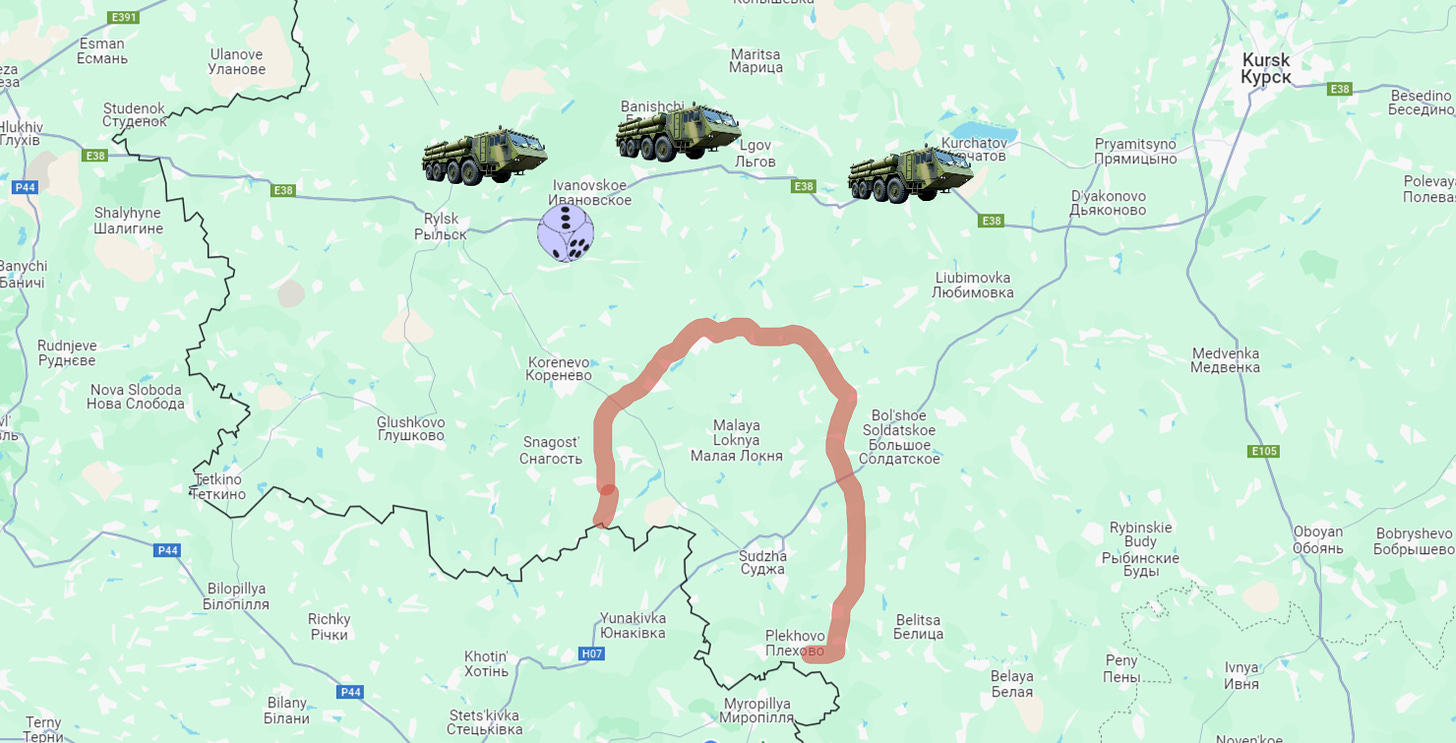
The red line represents roughly the LOC, the die is roughly where the Storm Shadow attack happened. The AD trucks represent premier AD systems positioned somewhere to the rear. It doesn’t mean they can’t cover the entire area, including past the LOC near Sudzha, etc.—after all, S-400 has over 400km range. But that’s only for high flying objects. Very low stealthy objects require additional support to be seen at decent distance, like radar masts such as the 40V6 or AWACS flying high; and we know AWACS is one area Russia has some troubles so it’s hard to know how thoroughly they cover the region.
Even if you detect the object, given that the AD system is far back, the Storm Shadows have a good chance of reaching the target first, before the AD missiles can even get to them. This is the challenge of low flying missiles in particular.
The second most important thing: Western pundits rejoice that the strike “proves” how F-16s or other platform are able to hit Russia with Western missiles. The problem is, this strike proves—thus far at least—they’re too scared to launch them deep. The fact they targeted something right near the LOC indicates that the Su-24s, Mig-29s, or other carrying platforms (F-16s almost certainly not risked from their far-west Ukraine refuge) were terrified of coming anywhere close to the Russian border, as they would be shot down by S-400 or related systems.
You see, Ukraine’s export variant Storm Shadows are said to go 300km max, which means just to reach the compound in Kursk, the planes likely released the missiles at maximum distance all the way over the Dnieper river, safely out of Russian AD range:
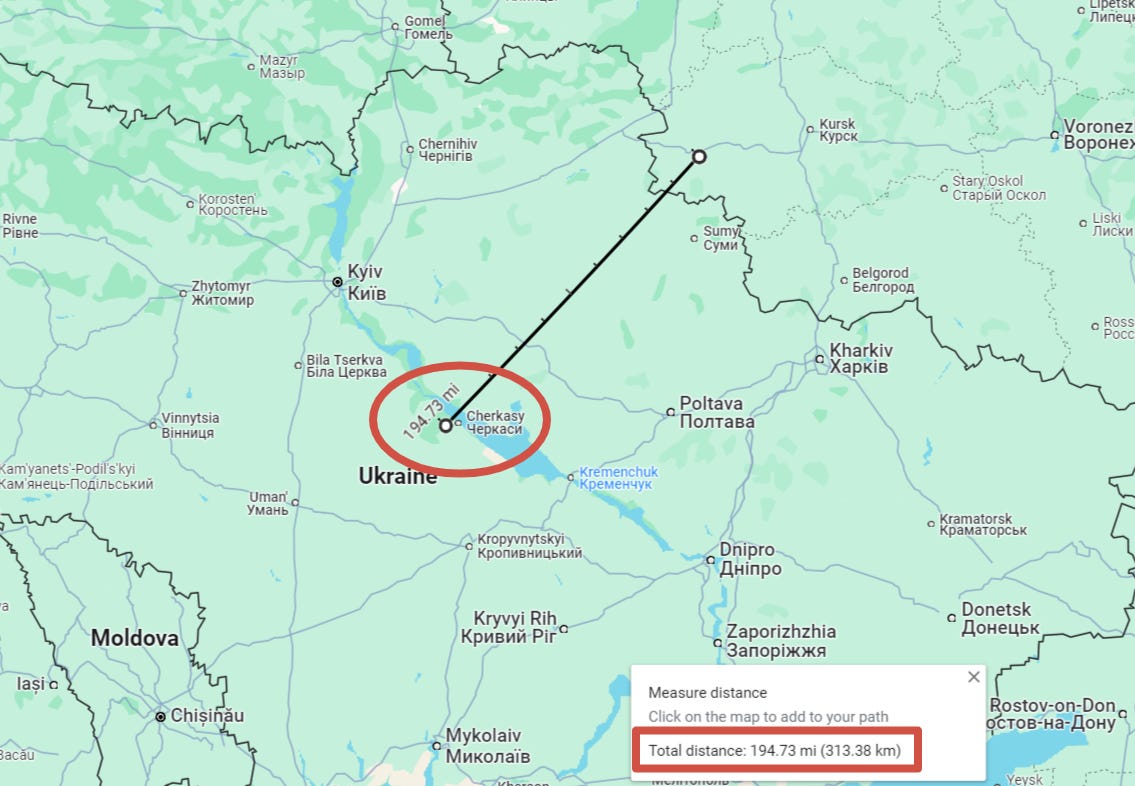
If they could strike farther, they likely would have to “shame” Putin. But that would have required the carrying planes to fly near the Russian border, in order to get 300km+ range deep into Russia on the missiles. In fact, they played it extremely safe and just barely lobbed the missiles over the border to not expose themselves to return AD fire. There was at least one incidental, though unverified, report that appeared to confirm this, so it’s not pure conjecture. To wit:
Maryino. According to updated information, the historic estate of the Baryatinsky princes was hit by multiple Storm Shadow/SCALP-EG low-observable tactical missiles.
In order to avoid falling into the range of the R-37M air-to-air missiles placed on the SU-35S hardpoints, the low-altitude launch lines were moved by the Ukrainian Armed Forces command to the area of the cities of Kremenchug and Cherkassy (more than 230-250 km from the contact line).
Let us remind you once again that in order to combat targets such as Storm Shadow, A-50Us with Su-35S links must be on combat duty in the air, and S-400 systems must be deployed on the ground, with 92N6 illumination/guidance radars located on 40V6MD towers. The enemy will continue to carry out launches primarily from rear areas.
Senior Russian officials, and I am inclined to think especially North Koreans, have been the likely targets.
On October 11, 2024, the Ukrainians already struck this place, and the shock wave damaged the administrative building.
Part 1 Wrap Up
Now getting back to today’s events to wrap up. A Ukrainian Rada deputy claims new information that Russia will soon strike the Verkhovna Rada itself:
Rada Deputy Batenko: The information that has just come to us is that there is a threat of a missile attack on Grushevsky, 5 in the coming days. This is the Ukrainian parliament. I see that Putin has raised the stakes as much as possible.
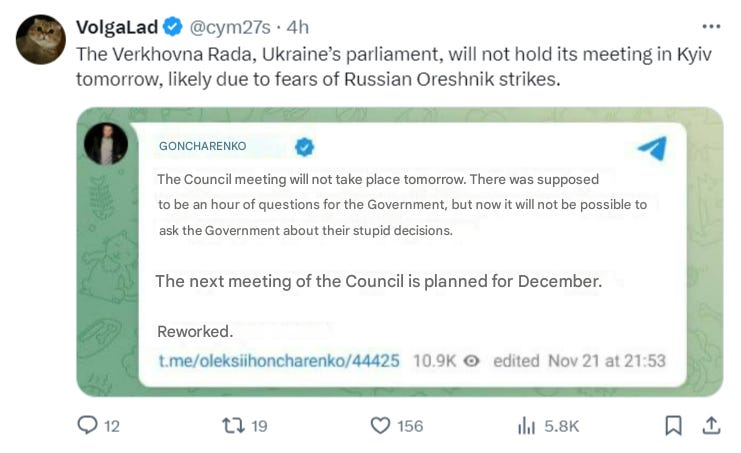
If true, it could mean Russia is not yet done with its retaliation, though it’s just as likely it’s more psyop pandering.
Perhaps the most shocking revelation from this entire incident is just how rudderlessly the United States sleepwalks into potential nuclear war, led by a demented ‘Commander-in-Chief’ who’s clearly not making any of the precipitative escalatory decisions.
Just watch at the nearly surreal scene, of the hollow mask nod off and smirk at the question of nuclear war:
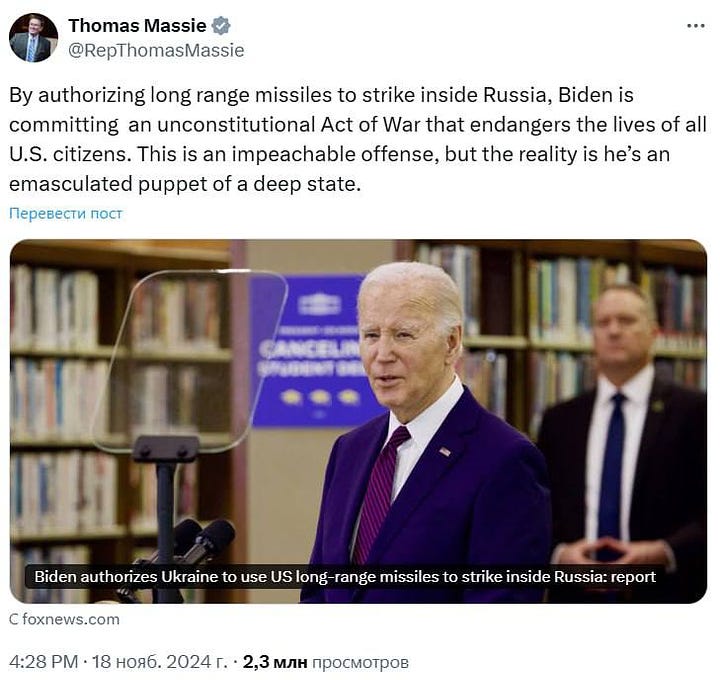

The fact that mere bureaucratic henchmen like Jake Sullivan, Blinken, and co., are likely the ones behind such momentous decisions is a scary thought: the US in effect has no leader, and no real figure of accountability in general, at a time of deepest global polycrisis and the verge of nuclear war; in many ways, it is sickeningly treasonous. One can viscerally feel just how little regard, or outright hatred, these cretins have for the average citizen—only the interests of their globalist cabal bosses matter.
Matt Taibbi relays the contrastingly dire tone with which Russian media covered foregoing events:
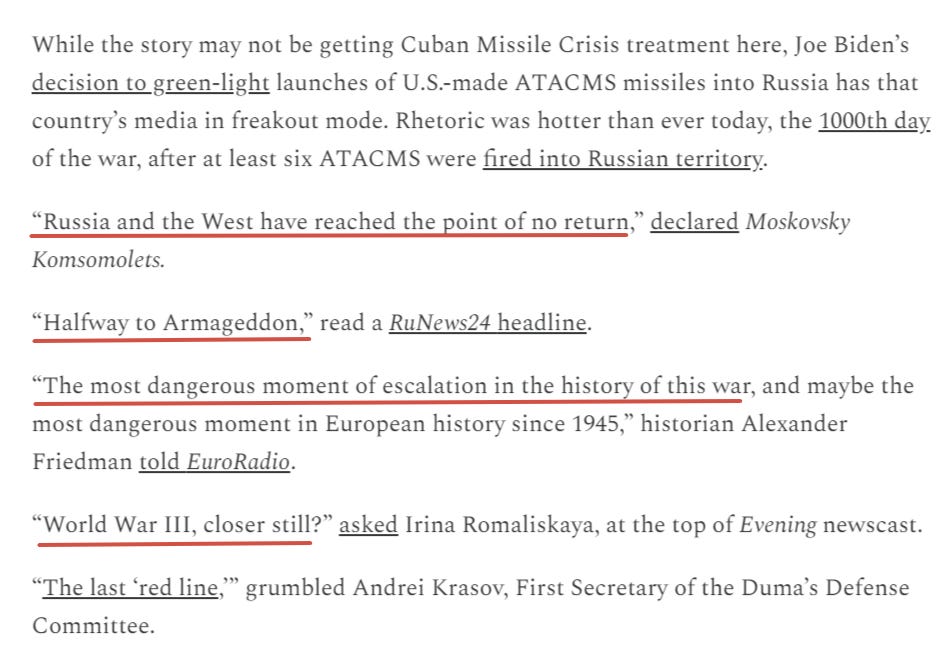
Yet the West wallows in denial, with Pentagon and White House spokesmen dismissing the attack, and half the media merely thumbing their nose at Putin’s “impotent rage”.
They pretend that Putin is escalation averse, with “red lines” allegedly dashed time and time again. In reality, astute observers note that Putin operates in quite the contradictory way:
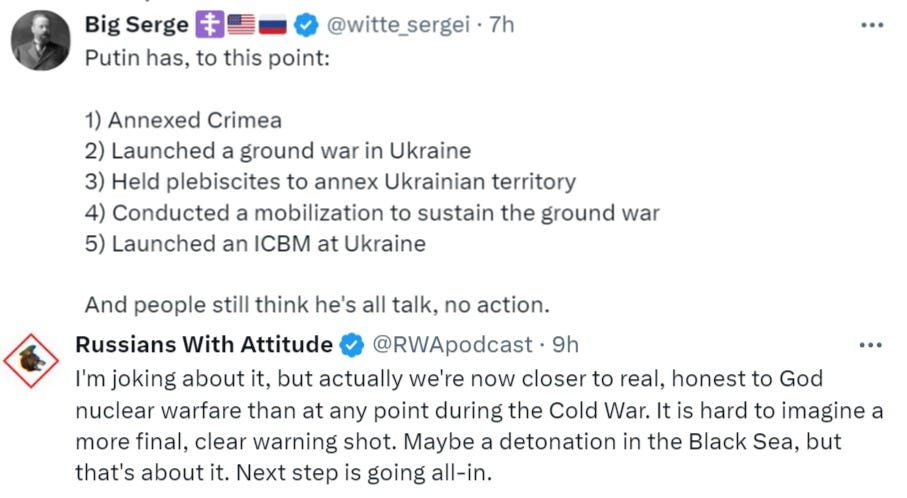
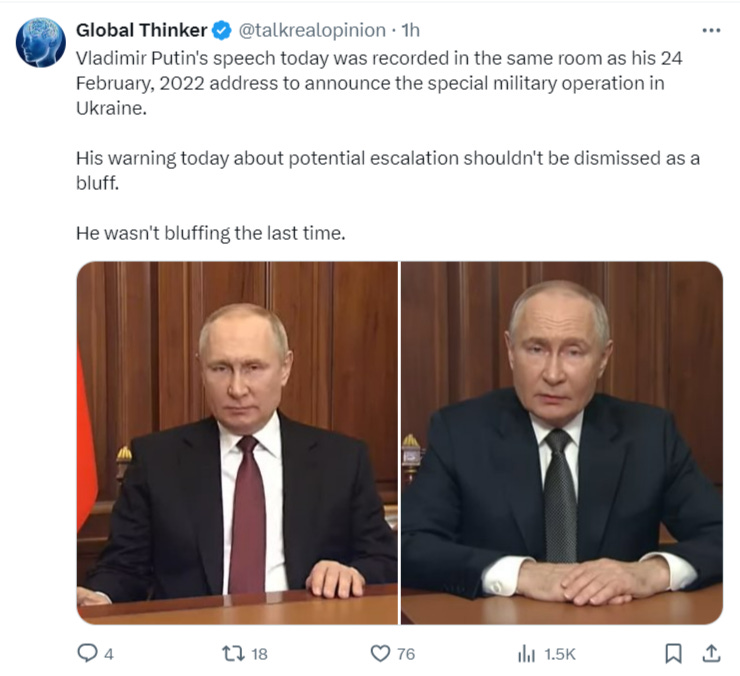
Victor Orban’s thematic speech at the Eurasia Forum in Budapest today puts a finishing touch to underscore developments:
Viktor Orban – declared the collapse of Western civilization:
After the collapse of communism, after the collapse of the USSR, the idea of the Western elite was that the world should be Westernized, should be created in their image and likeness. This is the idea of American exceptionalism, European arrogance and conceit, real or imaginary civilizational superiority, which has existed since the European Enlightenment.
All this contributed to the fact that after 1990 the task became not the restoration of Eurasia, not a global agenda, not a world agenda, but the Westernization of the world along the lines on which the previously successful Western world had been built.
We are here today because that era is over. The idea that the whole world should be organized along Western lines and that the people who would be chosen to do that would be willing to do it in exchange for economic, financial advantages has collapsed.
Asian states have become stronger and have proven their ability to rise, exist, and survive as independent economic and political powers. As a result, the center of the world economy has shifted to the East.
Moreover, the Eastern economies are growing four times faster than the Western ones. Western industry creates 40% of the world’s added value, and Eastern industry – 50%. This is the new reality.
The Western world has not only failed in its idea and strategy of reorganizing the world, but is also suffocating in its own environment within the Western world. The issues that liberal, progressive, dominant thinking could not answer have been put on the agenda. This is migration, this is gender ideology, ethical contradictions regarding traditional values, or even the ongoing war. Thus, the West is becoming increasingly incapable of governing itself.
The five-hundred-year era of dominance of Western civilization is over, the century of Eurasia is coming, said Hungarian Prime Minister Orban, noting that it will not be easy for the West to realize that they are increasingly “not the most beautiful and smart.”



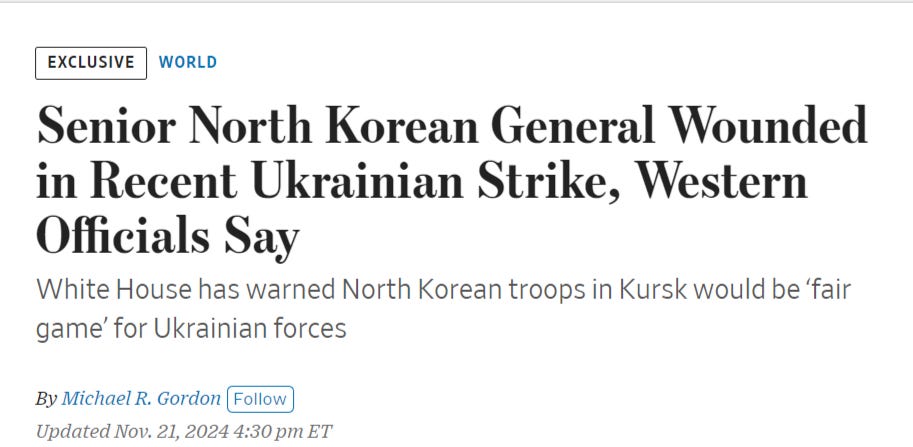













The Russians have such class. They let the West play their little games and then they arrive with a world-stopping missile. You have to laugh.
So right Belyi.